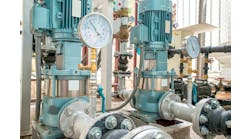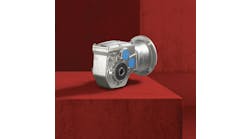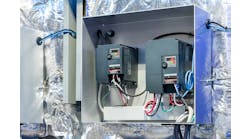How do you address electromagnetic interference when designing a motion system using variable-frequency drives?
Radiated noise occurs when the drive's output waveform turns the motor leads into a large antenna. This type of noise can effect equipment near to the motor leads. It is always recommended to minimize the motor lead length to limit the radiated noise. Also, reducing the drive's carrier frequency can help to reduce the amount of noise radiated. To eliminate radiated noise altogether, armored/shield cable or grounded metal conduit can be used.
Drives generate conducted noise when the transformer sources current for the drive's high frequency switching needed by the drive to generate its output waveform. These high frequency currents can effect negatively effect the operation of equipment on the same power source. Reductions in the drive's carrier frequency helps, but input filtering would be needed to significantly mitigate these currents. Low cost solutions include the use of ferrite cores.
The chance of issues occurring in an application can be greatly reduced by carefully following best installation practices for wiring and grounding. Manufacturer’s recommendations for cable selection, grounding and installation are critical to good results. Generally, each wiring class should be kept separately from each other where possible. Input and output wiring to the drive should not be placed next to each other and should also be separate from control cables. Shielded cables between the drive and the motor that are properly installed will help to keep the noise within the cables and the noise will then have a low impedance path back to the source. This will greatly reduce the chance of the noise finding its way into other cables and also help to keep it from radiating into the air.
Sometimes noise from a VFD can go back on the AC line and cause interference to other devices on the network or it can even propagate through the air to interfere with other equipment. In that case it may be useful to apply a filter to suppress the noise. Some VFDs may provide this kind of protection either as a standard or optional feature in the form of a filter. It is also possible to source or specify this type of Electromagnetic Interference/ Radio Frequency Interference filter and apply it on the input of the drive to mitigate the noise.
For conducted emissions which are high frequency components that are conducted out of the VFD through power conductors, the standards still apply, and the control systems are designed to limit conducted emissions and tested to comply with one of the standards. Generally, some type of filter will be added to the control power connections that eliminate any conducted emissions that are present on the line because of EMI from the control system or semiconductor switching transients.
The key to both types of emissions is to make sure the VFD has been designed to an EMI standard and has the appropriate label indicating its compliance to those standards.



















